Airmen participate in a POW/MIA 24-hour Remembrance run at Eielson Air Force Base, Alaska, Sept. 18, 2020.
Providing up-to-date information, news and original content on American Military issues.
Airmen participate in a POW/MIA 24-hour Remembrance run at Eielson Air Force Base, Alaska, Sept. 18, 2020.
The ‘Missing Man Table’ sits at the Prisoner of War and Missing in Action Closing Ceremony at Vandenberg Air Force Base, Calif., Sept. 18, 2020. Each detail of the table symbolizes an aspect of the POW/MIA’s life or fate, or of those whom they left behind. The table is displayed to signify those who are missing but are not forgotten.
An Air Force B-52H Stratofortress receives fuel from a KC-135 Stratotanker during a task force mission over the Mediterranean Sea, Sept. 16, 2020.
Soldiers detonate a mine-clearing line charge during a live-fire exercise rehearsal as part of Noble Partner at Vaziani Training Area, Georgia Sept. 17, 2020. The exercise is designed to enhance force readiness and interoperability
Army Paratroopers assigned to the 1st Battalion, 503rd Infantry Regiment, 173rd Airborne Brigade, don a parachute at Aviano Air Base under COVID-19 prevention conditions in preparation for an airborne operation onto Juliet Drop Zone in Pordenone, Italy, Sept. 15, 2020.
Ten Army National Guard members assigned to the 1-182nd Field Artillery Regiment, Olympia Armory, Detroit, Mich., now part of the Michigan National Guard's COVID-19 Joint Task Force, work with the Forgotten Harvest Food Bank of Royal Oak, Mich., preparing pallets of meal boxes for local communities in Royal Oak, Mich., Sept. 15, 2020. The Food Bank warehouse delivers 138,000 pounds of surplus food per day to local charities in metro Detroit. Since March, Michigan National Guard teams have supported food banks across Michigan, distributing more than 7 million pounds of food to local communities.
Arizona National Guard service members prepared and delivered boxes of groceries to residents of Apache County at a local food bank in Concho, Ariz., Sept. 16, 2020. The Arizona National Guard has activated more than 800 Arizona Citizen-soldiers and airmen to support food banks and other community needs during this state of emergency response.
Army 1st Lt. Reynalynn Palanca, a critical care registered nurse, replaces intravenous drip lines in the intensive care unit of Guam Memorial Hospital in Tamuning, Guam, Sept. 18, 2020. Twenty-two military medical professionals integrated with GMH staff to supplement COVID-19 medical care in response to the Government of Guam’s continuing efforts to address the growing number of COVID-19 cases throughout the island.
Army 1st Lt. Reynalynn Palanca, right, and Army 1st Lt. Malia King, both critical care registered nurses, attend to a patient in the intensive care unit of Guam Memorial Hospital in Tamuning, Guam, Sept. 18, 2020. Twenty-two military medical professionals integrated with GMH staff to supplement COVID-19 medical care in response to the Government of Guam’s continuing efforts to address the growing number of COVID-19 cases throughout the island.
Soldiers freefall after exiting an Air Force C-130 Hercules aircraft during night airborne operations in Pordenone, Italy, Sept. 15, 2020.
A soldier fires an M4 carbine during marksmanship training at Cao Malnisio Range in Pordenone, Italy, Sept. 16, 2020.
An Air Force KC-135 Stratotanker leads a joint formation of F-16 Fighting Falcons during Astral Knight in Poland, Sept. 17, 2020. The joint, multinational exercise involves U.S. airmen and soldiers working with service members from Poland, Latvia, Lithuania, Estonia and Sweden.
Sept. 18, 2020 | BY AIR FORCE STAFF SGT. STEVEN TUCKER
The COVID-19 pandemic has presented new challenges to training multiple large groups concurrently. Members of the 103rd Civil Engineer Squadron, 103rd Security Forces Squadron, 103rd Logistics Readiness Squadron and 103rd Medical Group combined their expertise to conduct key readiness training while protecting the health of participants.
The course, held at Stones Ranch Military Reservation, East Lyme, Connecticut, trained the 103rd Civil Engineer Squadron in expeditionary operations to maintain their deployment readiness.
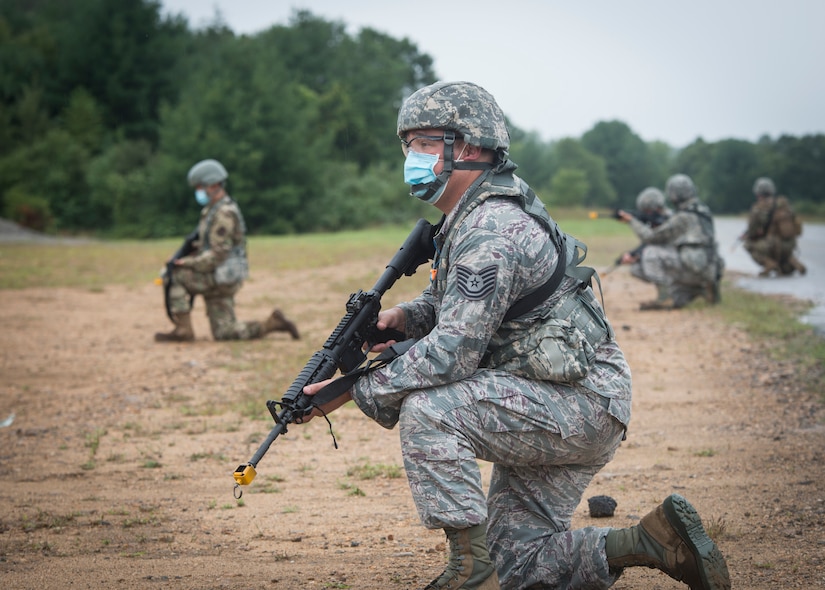
"The four key things are convoy operations, individual movement techniques, integrated base defense and entry control point operations," said Air Force Tech. Sgt. James Diederich, 103rd Civil Engineer Squadron HVAC shop supervisor. "We have the subject matter experts here to teach us how to do it."
Instructors from the 103rd Security Forces Squadron worked in tandem with a civil engineer squadron planning committee to design the course, allowing them to teach their expertise and meet the civil engineers' training requirements. This provided a mutually beneficial training experience for members of both squadrons.
"The Guard is great for that because you have people with different backgrounds," said Air Force Tech. Sgt. Dedrick Baublitz, 103rd Security Forces Squadron training planner and instructor. "We have people that are police officers and medics on the civilian side within CE [civil engineering], so some of the things we train are things they can elaborate on to help the other trainees if they're having trouble. They learn from us, we learn from them, so it's a win all around."
Having local experts and a training area close by make a difference in being able to carry out the training, Diederich said.
"Especially now, during the pandemic, we've lost a lot of opportunities to send people to training, so the fact that we have these guys right here and this facility in the state has allowed us to meet our objectives without too many obstacles," Diederich said.
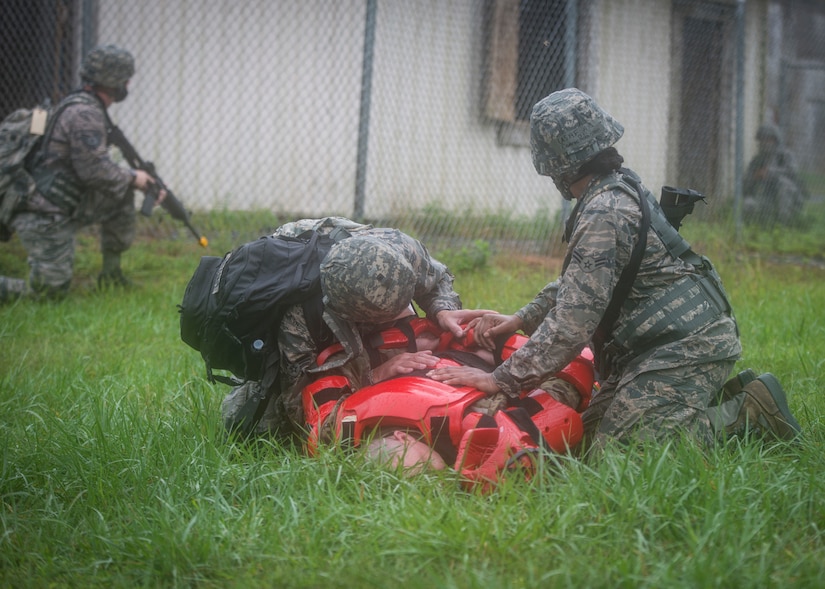
Members of the 103rd Medical Group's public health team helped ensure proper health protection measures while the 103rd Logistics Readiness Squadron provided vital transportation to participants.
"We coordinated prior to their training to make sure they had all the proper risk mitigations in place and made sure lodging, transportation and PPE [personal protective equipment] were all set up before they got there," said Air Force Tech. Sgt. Sara Beaudry, 103rd Medical Group public health noncommissioned officer in charge. "We went down and briefed proper PPE measures and trained people to conduct patient screening to make sure nobody became ill, and that if anyone did, we could break the chain of infection."
The public health team had help from 103rd Civil Engineer Squadron firefighters, who helped conduct health screenings and served as subject matter experts while participating in the training course.
"It helps that they are firefighters and EMT-trained, so they have seen COVID-19 cases and know what to look for," Beaudry said. "They are also very supportive of us going there and were extremely receptive [to] all the information we gave them."
Public health is helping to make sure the 103rd gets the mission accomplished while keeping the health of the force the top priority, Beaudry said.
"Preventative health is the best way we can mitigate risk to any population," Beaudry added. "Simple things like hand washing and wearing masks are in place to protect each other and to make sure we can get the mission done and stay healthy."
(Air Force Staff Sgt. Steven Tucker is assigned to the 103rd Airlift Wing).
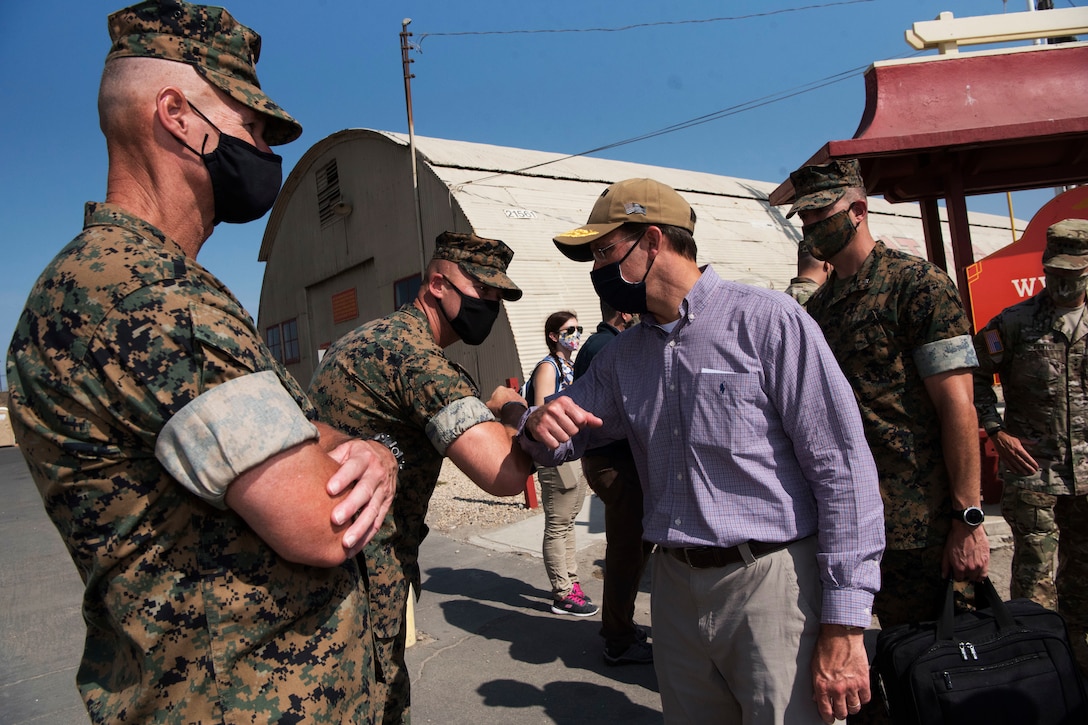 |
Defense Secretary Dr. Mark T. Esper greets Marines during a visit to Camp Pendleton, Calif., Sept. 17, 2020.
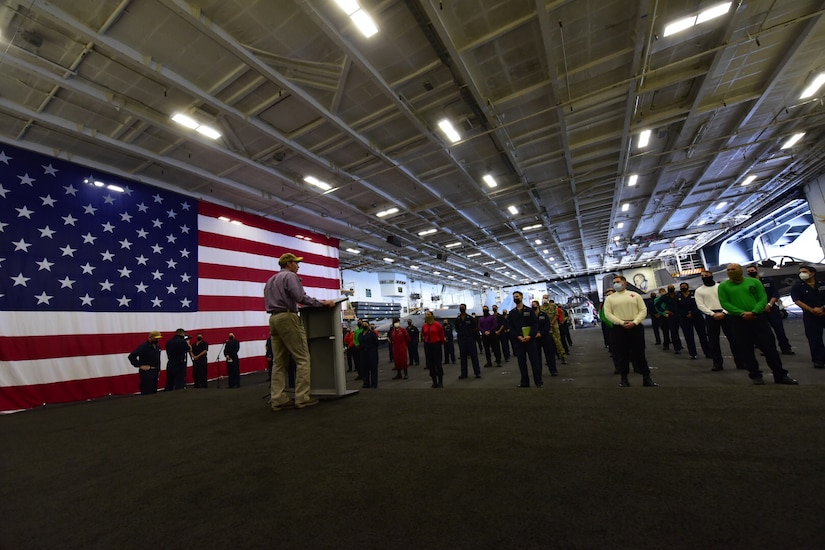
Yesterday, a sailor asked Esper if aircraft carriers will continue to play a central role in the Navy or go the way of battleships, which are no longer in the fleet.
The secretary assured the sailors that carriers will not be going away and will continue to play a pivotal part in defense strategy.
Besides their lethality, carriers, along with the other ships, are important for showing America's presence abroad and its commitment to allies and partners and deterring bad behavior from others, he said.
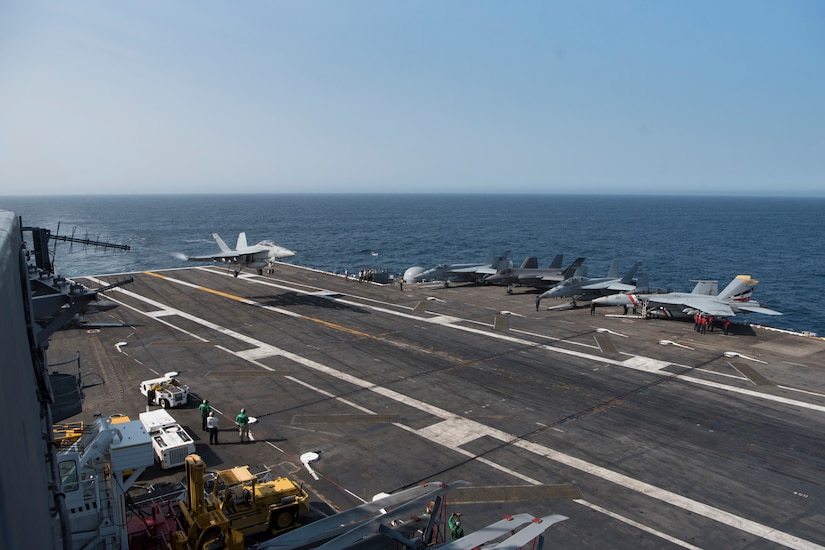
The Navy also plays the key role of maintaining freedom of navigation and commerce around the globe, he added.
Looking into the future, the Navy will have a more balanced force, which can deliver effects from all domains: sea, land, air, space and cyberspace, he said.
A more balanced force, he noted, will include surface, subsurface and air unmanned vehicles. "Unmanned will enable us to grow the United States Navy well beyond 355 ships. It will add more lethality, survivability and capability."
Another sailor asked how the U.S. aircraft carrier fleet stacks up against those of the rest of the world.
"We have the most advanced aircraft carriers in the world, and we have more of them than anybody else, and we will continue to maintain that overmatch," Esper replied.
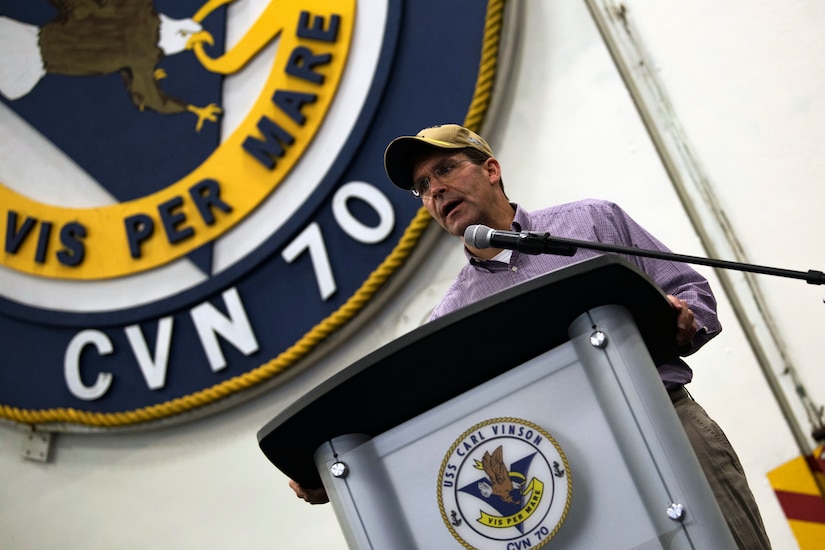
That overmatch is not just the number of planes or self-defense systems a carrier has, it's the sailors and leadership of the officers and noncommissioned officers, how effectively they work together, how quickly they turn aircraft, launch and retrieve, Esper said.
Besides having good leaders, the Navy and Marine Corps team has the best training, readiness, operational art and doctrine of any navy, he added.
An important part of boosting readiness is the Navy's commitment to ensuring sailors' health and fitness and taking care of their families, he mentioned.
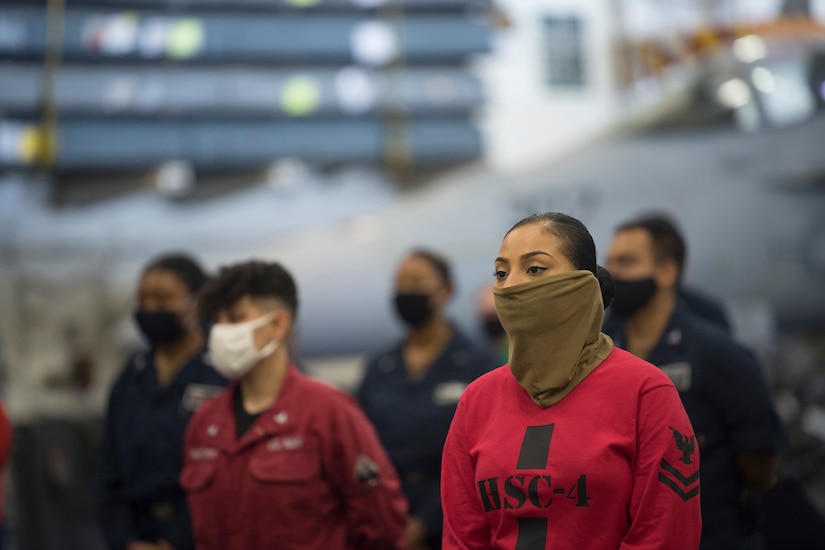
A third sailor asked what the department is doing in the face of the growing military threat from China, which has been modernizing its forces.
"We need to outcompete China and are doing just that," he said. "We are going to maintain that overmatch."
The department has the largest research and development budget in history, and it is investing heavily in such technologies as artificial intelligence; a 5G network; unmanned ground, air, surface and undersea vehicles; and hypersonics.
Esper said, "AI will be a game-changer. It will change the character of warfare."